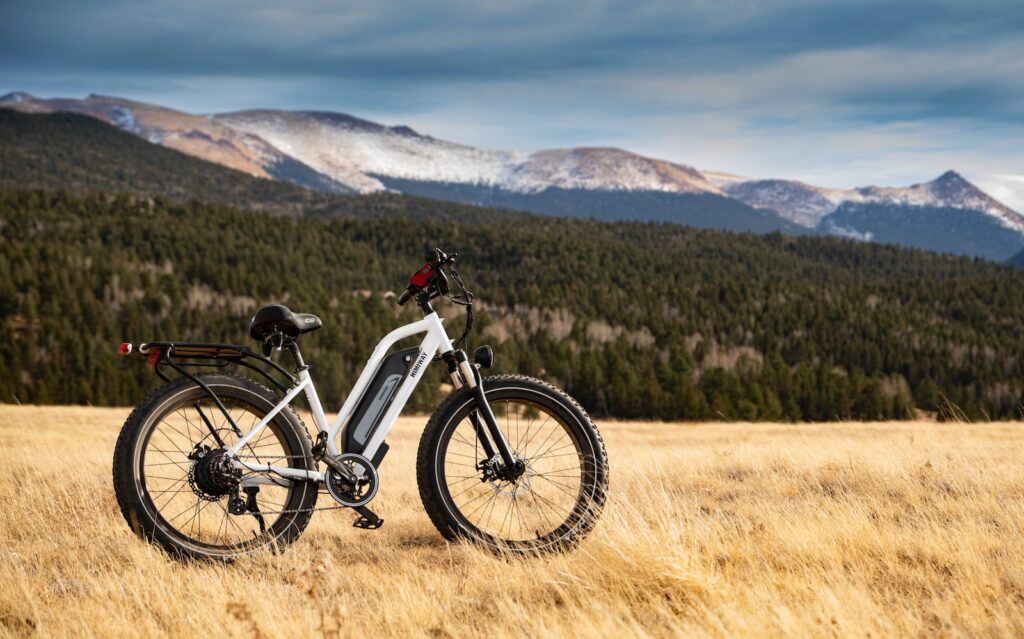I once said I’d never write about e-bike regulations. And about e-bike laws around the world? No way.
But then, a good friend of mine, an avid reader of The Urban Doctor, readed about the advantages of electric bicycles and decided to join the movement. He wanted to buy an e-bike, but he wasn’t sure if he had to register it, license it, or what other steps might be involved. That’s when he came up with the idea: “Why don’t you create a comprehensive guide to E-Bike laws and regulations?”
E-bike rules change rapidly. It feels like trying to capture a photo of a race car as it zooms by. I’ve done my best to provide a guide that’s relevant today and remains useful in the future. It wasn’t easy, but I hope it helps.
Table of Contents
Global Overview of E-Bike Regulations
Searching for e-bike laws and regulations can feel a bit like exploring uncharted territory. Each continent, and often each country within it, has its own unique perspective on how these electric companions should fit into the transportation mix.
Broadly speaking, e-bikes have found a growing acceptance worldwide. Many regions recognize their potential in reducing traffic congestion, decreasing carbon emissions, and offering an alternative mode of transport that bridges the gap between traditional bicycles and motor vehicles. Yet, it’s also evident that not all places view them in the same light.
Whether you need to license and pay taxes for an electric bike depends on your country and local regulations. In many places:
- Licensing: Electric bikes (e-bikes) often don’t require a license if they fall within certain specifications, like a maximum power output and top assisted speed. However, if an e-bike exceeds these specifications, it might be classified as a moped or motorcycle, which could require licensing.
- Taxes: The purchase of an electric bike may be subject to sales tax or VAT, depending on where you live. Additionally, some countries or states offer tax incentives or rebates for purchasing e-bikes as a way to promote sustainable transportation.
- Registration: Some places require e-bikes to be registered, especially if they’re powerful or fast enough to be categorized with mopeds or motorcycles.
- Insurance: Depending on local regulations, you might also need to have insurance for your e-bike.
E-Bike Laws and Regulations in Europe

In the EU, there’s a distinction made between “pedelecs” and more powerful e-bikes:
- Pedelecs: These are e-bikes that provide assistance only when the rider is pedaling and that assistance stops when the e-bike reaches 25 km/h or if the motor’s power exceeds 250W. Pedelecs that adhere to these specifications are considered bicycles in many EU countries and often don’t require registration, insurance, or a license.
- S-Pedelecs: These are e-bikes that can provide assistance up to 45 km/h and might have a motor more powerful than 250W. These are usually considered more like mopeds in many EU countries, and thus may require registration, insurance, and sometimes a special license.
Germany
- Pedelecs: Treated as bicycles; no license, registration, or insurance required.
- S-Pedelecs: Treated as mopeds; require insurance and a moped license plate, but no driving license if born before 1980.
France
- Pedelecs: Treated as bicycles; no special requirements.
- S-Pedelecs: Need to be registered, insured, and the rider needs to wear a helmet and have a valid driving license.
Netherlands
- Pedelecs: Treated as regular bicycles.
- S-Pedelecs: Require a helmet, registration plate, and insurance.
Spain
- Pedelecs: Considered as bicycles if they adhere to EU regulations.
- S-Pedelecs: Regulations can vary, but typically, they require insurance and appropriate safety gear.
Italy
- Pedelecs: Considered as bicycles; no special requirements if adhering to EU regulations.
- S-Pedelecs: Need to be registered and insured.
Belgium
- Pedelecs: Treated as bicycles.
- S-Pedelecs: Must be registered, insured, and the rider should have a valid driving license and wear a helmet.
Austria
- Pedelecs: Treated as bicycles. No license or insurance required.
- S-Pedelecs: Require insurance and a moped license plate.
Croatia
- Pedelecs: Treated as bicycles.
- S-Pedelecs: Insurance and registration required.
Czech Republic
- Pedelecs: Treated as bicycles.
- S-Pedelecs: Require registration, insurance, and an appropriate driving license.
Denmark
- Pedelecs: Treated as bicycles.
- S-Pedelecs: Must be registered and insured. Helmet required.
Estonia
- Pedelecs: Treated as bicycles.
- S-Pedelecs: Need to be registered.
Finland
- Pedelecs: Treated as bicycles.
- S-Pedelecs: Require insurance, and the rider must be at least 15 years old with a moped license.
Hungary
- Pedelecs: Treated as bicycles.
- S-Pedelecs: Require registration and insurance.
Latvia
- Pedelecs: Treated as bicycles.
- S-Pedelecs: Require registration and insurance.
Luxembourg
- Pedelecs: Treated as bicycles.
- S-Pedelecs: Need to be registered, insured, and the rider needs to have a driving license.
Poland
- Pedelecs: Treated as bicycles.
- S-Pedelecs: Registration and insurance required.
Portugal
- Pedelecs: Treated as bicycles.
- S-Pedelecs: Need registration and insurance.
Slovakia
- Pedelecs: Treated as bicycles.
- S-Pedelecs: Insurance and registration required.
Slovenia
- Pedelecs: Treated as bicycles.
- S-Pedelecs: Require insurance and registration.
Sweden
- Pedelecs: Treated as bicycles.
- S-Pedelecs: Need to be registered and insured.
E-Bike Laws and Regulations in the United States

The United States has federal guidelines that classify e-bikes into three categories:
- Class 1: E-bikes that are pedal-assist only, with no throttle, and have a maximum assisted speed of 20 mph.
- Class 2: E-bikes that have a throttle and can propel the bike up to 20 mph without pedaling, but the motor will stop assisting at 20 mph whether using a throttle or pedaling.
- Class 3: E-bikes that are pedal-assist only, with no throttle, and a maximum assisted speed of 28 mph.
Here’s an overview by state, though keep in mind this is a broad overview and the details (like age restrictions, helmet requirements, and where you can ride) can vary:
- Alabama: E-bikes are considered bicycles if they fit into the three-class system. No special licensing or registration is required.
- Alaska: Class 1 and 2 e-bikes are treated as bicycles. Class 3 e-bikes have additional age and helmet requirements.
- Arizona: E-bikes are not considered motor vehicles and are largely treated as bicycles.
- Arkansas: E-bikes are considered bicycles and are not subject to licensing or registration.
- California: E-bikes are classified into the three-class system. Each class has specific rules about where it can be ridden. No licensing or registration is required.
- Colorado: E-bikes are categorized into the three-class system and are not considered motor vehicles.
- Connecticut: E-bikes are not classified as motor vehicles and are treated similarly to bicycles.
- Delaware: E-bikes are not considered motor vehicles. They’re governed by the three-class system.
- Florida: E-bikes are not classified as motor vehicles. Helmets are required for riders under 16.
- Georgia: E-bikes are not considered motor vehicles and are treated as bicycles.
- Hawaii: Regulations can vary by county, but generally, e-bikes are not treated as mopeds or motorcycles.
- Idaho: E-bikes are considered bicycles if they adhere to the three-class system.
- Illinois: E-bikes are treated as bicycles and are not subject to registration or licensing.
- Indiana: E-bikes are divided into the three classes and are treated similarly to bicycles.
- Iowa: E-bikes are not considered motor vehicles.
- Kansas: E-bikes are considered bicycles and are not subject to licensing or registration.
- Kentucky: E-bikes are not classified as motor vehicles.
- Louisiana: E-bikes are treated similarly to bicycles and are not considered motor vehicles.
- Maine: E-bikes are categorized into the three-class system.
- Maryland: E-bikes are considered bicycles if they adhere to the three-class system.
- Massachusetts: E-bike regulations were under discussion with proposals to adopt the three-class system. Checking for updates is advisable.
- Michigan: E-bikes are divided into the three classes and are not considered mopeds or motor vehicles.
- Minnesota: E-bikes are treated as bicycles and are categorized into the three classes.
- Mississippi: E-bikes are considered bicycles.
- Missouri: E-bikes are not considered motor vehicles.
- Montana: E-bikes are treated as bicycles and are not subject to registration or licensing.
- Nebraska: E-bikes are divided into the three classes. They’re not classified as motor vehicles and are treated similarly to bicycles.
- Nevada: E-bikes fall under the three-class system and are treated like bicycles.
- New Hampshire: E-bikes are considered bicycles if they fit into the three-class system. No special licensing or registration is required.
- New Jersey: E-bikes are categorized under the three-class system and are treated similarly to traditional bicycles.
- New Mexico: E-bikes are divided into the three classes and are not subject to licensing or registration.
- New York: E-bikes are classified into the three categories. Class 3 e-bikes are restricted to roads/paths with posted speed limits of 30 mph or less.
- North Carolina: E-bikes are categorized into the three-class system and are treated like bicycles.
- North Dakota: E-bikes are considered bicycles and aren’t subject to licensing or registration.
- Ohio: E-bikes fall under the three-class system. They’re treated similarly to bicycles.
- Oklahoma: E-bikes are not considered motor vehicles and are treated as bicycles.
- Oregon: E-bikes are divided into the three classes. They’re not classified as motor vehicles.
- Pennsylvania: E-bikes are considered bicycles if they adhere to the three-class system. No special licensing or registration is required.
- Rhode Island: E-bikes are treated as bicycles and fall under the three-class system.
- South Carolina: E-bikes are not considered motor vehicles and are treated similarly to bicycles.
- South Dakota: E-bikes are divided into the three classes and are treated as bicycles.
- Tennessee: E-bikes are classified into the three categories and are not considered motor vehicles.
- Texas: E-bikes fall under the three-class system and are treated similarly to bicycles.
- Utah: E-bikes are divided into the three classes and are not subject to registration or licensing.
- Vermont: E-bikes are treated as bicycles and are not classified as motor vehicles.
- Virginia: E-bikes are divided into the three classes. They’re treated like bicycles and are not considered motor vehicles.
- Washington: E-bikes fall under the three-class system and are treated similarly to bicycles.
- West Virginia: E-bikes are treated as bicycles if they fit into the three-class system. No special licensing or registration is required.
- Wisconsin: E-bikes are categorized into the three-class system and are treated like traditional bicycles.
- Wyoming: E-bikes are divided into the three classes and are not considered motor vehicles.
If you want details for each state, I recommend checking out ‘Electric Bike Laws: State by State‘.
E-Bike Laws and Regulations in the United Kingdom
In the United Kingdom, e-bikes, are acommonly known as “Electrically Assisted Pedal Cycles” (EAPC).
An e-bike is considered an EAPC if it meets specific criteria:
- It has pedals that can be used to propel it.
- The electric motor won’t assist you when you’re cycling more than 15.5 mph.
- The motor doesn’t exceed 250 watts.
If an e-bike meets these standards, then the good news is that it’s classified as a regular bicycle in the eyes of the law. This means riders won’t need to:
- Register the e-bike with the DVLA (Driver and Vehicle Licensing Agency).
- Pay road tax or get vehicle insurance specific to the e-bike.
- Have a valid driving license.
- Wear a motorcycle helmet (though it’s always a good idea to wear a standard bicycle helmet for safety).
However, things get a tad more complex if an e-bike doesn’t meet all of these criteria. In such cases, the e-bike might be classified as a moped or even a motorcycle. This distinction comes with a whole new set of responsibilities:
- Riders will need to register the vehicle.
- Insurance will be mandatory.
- A valid driving license will be required, and it must be the correct category for mopeds or motorcycles.
- Helmets designed for motorcycles, not regular bicycle helmets, must be worn.
- The e-bike will be subject to all the other road rules that apply to mopeds or motorcycles, which could include MOT requirements and displaying a number plate.
E-Bike Laws and Regulations in Australia
At the heart of Australia’s e-bike regulations is the national standard that e-bikes need to adhere to. So, what exactly does this standard entail?
- Motor Power Limitation: The e-bike’s motor shouldn’t exceed 250W in power. This is a critical factor, ensuring that e-bikes remain a supplement to human power rather than turning into full-fledged motor vehicles.
- No Throttle Feature: In addition to the power restriction, Australian standards mandate that compliant e-bikes shouldn’t have a throttle. Essentially, the motor should only provide assistance when the rider is actively pedaling, rather than propelling the bike on its own.
If an e-bike aligns with these standards, riders have a relatively hassle-free experience:
- No need for registration.
- No necessity for a special riding license.
- They can be used on cycling paths and roads just like regular bicycles.
However, if one opts for a more powerful e-bike that doesn’t adhere to these criteria, the game changes. These e-bikes can find themselves in the same category as motorcycles. This classification brings along additional responsibilities and considerations:
- Registration Requirements: The e-bike will need to be registered with the relevant state or territory’s road and traffic authority.
- Licensing: Riders will require a valid motorcycle license to operate their e-bike legally.
- Safety Gear: While it’s always advisable to wear helmets even on standard e-bikes, for those classified as motorcycles, the necessity for more robust safety gear, like motorcycle helmets, becomes paramount.
- Road Rules Adherence: These powerful e-bikes will be subject to the same road rules and regulations as motorcycles, which might include restrictions on where they can be ridden.
E-Bike Laws and Regulations in Canada
While Canada as a whole is positive about the e-bike movement, it’s important to remember that the country’s rules and regulations can be as diverse as its provinces. That said, there’s a general consensus on some basic criteria that e-bikes must meet to enjoy a more streamlined experience on Canadian roads:
- Power Limitations: The motor on the e-bike shouldn’t go beyond a power output of 500W. This ensures that while riders get the needed assistance, the e-bike doesn’t morph into a more powerful motor vehicle.
- Speed Caps: E-bikes should have a maximum speed limit of 32 km/h. Anything beyond this, and you’re veering away from the territory of ‘assisted’ cycling.
If an e-bike aligns with these foundational criteria, riders in most provinces can look forward to:
- No requirements for special licensing or a motorcycle license.
- No need to register the e-bike as you would a motor vehicle.
- The ability to use cycling paths and roads in the same way as traditional bicycles, with some provincial variations.
However, the waters get a tad murkier for e-bikes that don’t fit within these parameters. E-bikes that have more powerful specifications might be viewed differently in the eyes of Canadian law:
- Licensing and Registration: Such e-bikes might require registration with provincial road and transport bodies. Moreover, riders could need a special license or even a motorcycle license in certain provinces.
- Safety Protocols: There might be additional safety requirements, including the use of specific helmets and gear.
- Operational Restrictions: Powerful e-bikes may face restrictions on where they can be ridden, staying off certain paths or trails designated only for traditional bicycles.
E-Bike Laws and Regulations in Singapore
Singapore, often termed the ‘Lion City’, is renowned for its meticulous urban planning, cutting-edge infrastructure, and strict regulatory environment. Given the nation’s dedication to order and progress, it’s no surprise that e-bikes, are subject to specific regulations to ensure safety and order on its bustling streets.
Let’s delve deeper into the key facets of Singapore’s stance on e-bikes:
- Approval Process: Before even hitting the road, e-bikes in Singapore must first be given the green light by the relevant authorities. This approval ensures that the e-bike aligns with safety and technical standards set by the government. Typically, this involves checks on factors like the e-bike’s maximum speed, power output, and overall design.
- Registration Necessities: Once approved, e-bike owners aren’t quite done with the paperwork. Every e-bike must be registered, which involves providing necessary details and ensuring that the bike complies with all stipulated requirements.
- Flaunting that Number Plate: In a step that makes e-bikes somewhat akin to motor vehicles, each registered e-bike in Singapore must be affixed with a clear registration number plate. This number plate aids in identification, ensuring accountability and adherence to road rules.
- Age Restrictions: Singapore believes that with the power of an e-bike comes responsibility. Thus, riders must be at least 16 years old to operate an e-bike. This age requirement ensures a certain level of maturity and judgment when navigating the roads.
Is there a minimum age requirement for riding an e-bike?
The minimum age requirement for riding an e-bike varies by country and sometimes even by regions or states within countries. Here’s a breakdown based on the information previously discussed and some additional general insights:
- European Union: The mosaic of cultures and countries that comprise the EU has often harmonized regulations. Still, when it comes to e-bikes, nuances exist. While a 14-year-old in many EU nations can hop on an e-bike (that aligns with the pedelec criteria), individual member states might have their particular twists on the rule.
- United States: The vast expanse of the USA brings with it a myriad of state-specific regulations. A common thread in many states is the 16-year age barrier, especially for e-bikes that belong to the higher classes. But, as with many things in the US, it’s always advisable to dig into the specifics of each state to be on the safer side of the law.
- Canada: The Canadian provinces, with their distinct characteristics, often march to their beats. While many set the bar at 16 for e-bike enthusiasts, nuances in provincial rules can exist.
- Singapore: In this island nation, where meticulousness is the norm, e-bike regulations are crystal clear. If you’re below 16, you might have to wait a bit longer to navigate the city’s streets on an e-bike.
- Australia: The Land Down Under doesn’t have a strict nationwide age stipulation for e-bike riders. But given Australia’s vastness and regional diversities, a quick check for any regional or state-specific rules wouldn’t go amiss.
- United Kingdom: The UK, with its rich history and modern urban sprawls, allows riders aged 14 and above to enjoy the perks of an “Electrically Assisted Pedal Cycle” (EAPC). So, whether it’s a ride through the scenic countryside or a dash through London’s lanes, the young adults are covered.
Is wearing a helmet mandatory for riding an e-bike?
The requirement to wear a helmet while riding an e-bike varies by country, region, and sometimes even by city. Below is a general overview of helmet requirements for e-bikes in various regions:
- Australia: Helmet use is mandatory for all cyclists, including e-bike riders, across all states and territories.
- New Zealand: All cyclists, including e-bike riders, are required to wear helmets.
- Canada:
- British Columbia: All cyclists, including e-bike riders, must wear a helmet.
- Alberta: Helmet use is mandatory for cyclists under 18, but it’s a good practice for e-bike riders of all ages.
- Manitoba, New Brunswick, Newfoundland and Labrador, Nova Scotia, and Prince Edward Island: Helmet laws apply to all cyclists, regardless of age.
- Other provinces have varying rules, often dependent on age.
- United States: Helmet laws in the US are state-specific. Some states that mandate helmet use for e-bike riders (often based on age or e-bike classification) include:
- California: Helmet required for Class 3 e-bike riders and for those under 18.
- New York: Helmet use is mandatory for all e-bike riders.
- Delaware: Riders under 18 are required to wear a helmet.
- New Jersey: Helmet required for riders under 17.
- Note: Many states have varied rules, especially focusing on younger riders.
- Spain: In urban areas, helmet use is generally not mandatory for adults, but outside urban areas, all e-bike riders must wear a helmet.
- Israel: All e-bike riders under 18 are required to wear helmets.
- Singapore: Helmets are mandatory for e-bike riders.
- Czech Republic: Helmet use is required outside of urban areas for e-bike riders.
Please note that regulations can change. Before riding an e-bike or making a purchase, it’s essential to check the local laws and guidelines of a specific region to ensure compliance and safety.








